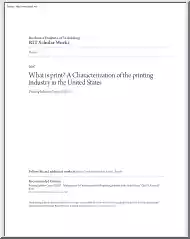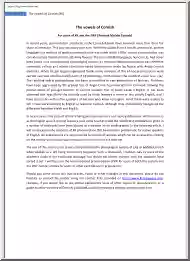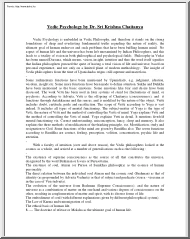Please log in to read this in our online viewer!

Please log in to read this in our online viewer!
No comments yet. You can be the first!
What did others read after this?
Content extract
Strange Physical Motion of Balls in a Cylinder Akihiro Matsuura College of Science and Engineering Tokyo Denki University Hatoyama-cho, Hiki-gun, 350-0394, Japan E-mail: matsu@k.dendaiacjp Abstract We report on the strange physical motion of balls rolled inside a cylinder, which at a glance seems to contradict physical laws. Based on this motion, we develop a new type of juggling in which several balls are manipulated in a cylinder to draw a variety of spatio-temporal patterns. In the presentation, we will demonstrate some manipulation 1. Introduction The Feat of manipulating several objects skillfully in the air is generally known as juggling. Nowadays, it is not only enjoyed physically but also explored artistically and scientifically. For example, performing artist M. Moschen has created performances in which geometric objects are manipulated in innovative ways, e.g, he bounces balls in a huge triangle in various rhythms and patterns From a scientific standpoint, C. E Shannon
showed a theorem on the timing of catching and throwing of objects and made a juggling robot [2]. In the mid 1980’s, a mathematical notation for expressing juggling patterns was discovered [4]. With the notation, a pattern is expressed with a sequence of non-negative integers (see [1] for details). The author presented a new type of juggling called spherical juggling [3] in which we insert several balls in a clear globe and roll them inside. This juggling is closely related to spherical geometry In this paper, we make a new connection among mathematics, physics, and performing arts. Namely, we first introduce the strange physical motion of a ball rolled inside a cylinder. At a glance, the phenomenon seems to contradict physical laws (though it does not). Based on this motion, we develop a new kind of juggling in which several balls are manipulated inside a cylinder. We also report on the implementation of a cylinder and the performance we produced. 2. Motion of a Ball Rolled in a
Cylinder We suppose that a long and clear cylinder is laid horizontally to the ground as shown in Fig. 1 We roll a ball inside the cylinder and observe its movement. The ball is assumed to be elastic like a rubber ball and there is some friction between the ball and the cylinder. If the ball is released on the vertical section as shown in Fig. 1, it apparently rolls around the vertical circle What if the ball is released to the nonvertical direction? It might be imagined that the ball proceeds in a spiral motion while declining by friction. But this is not always true The ball can roll back almost to the place it is released as shown in Fig. 2 The returned ball continues to move to the opposite direction and rolls back again Namely, the trace forms the shape of infinity (∞ ) . If the ball is rigid, it can not happen So it must be caused by friction and elasticity of a ball, though we have not succeeded in the complete physical analysis yet. Figure 1: A ball which rolls vertically in
the cylinder. Figure 2: A ball which rolls back. 3. Juggling in a Cylinder 3.1 Basic Patterns We use the ball motion in Section 2 to define a new type of juggling Figure 3 shows one way of manipulating three (or an odd number of) balls in a cylinder. The balls are inserted from the center hole and rolled on the inner surface. Balls are released to the left and the right orbits using both hands alternately. Similarly, Figure 4 shows one way of manipulating four (or an even number of) balls. Note that two sets of balls are manipulated independently on the two orbits Besides these patterns, an infinite number of patterns are possible using the mathematical notation introduced in Section 1. Figure 3: A basic pattern with three balls. Figure 4: A basic pattern with four balls. 3.2 Implementation and Performance We implemented clear acrylic cylinders (Fig 5) and checked if the basic patterns of balls are actually possible. Based on the juggling, we created a performance with a theme
of encounter of a performer with the unknown cylinder. Having some play, the performer happens to find the strange motion of a rolling ball. He starts to make a variety of beautiful patterns in the cylinder, which would also be the encounter of the audience with the new visual world. The performance was presented in several performing events including the international performance festival in Shizuoka, Japan (Fig. 6) Many of the audience seemed to get interested in the cylinder and enjoy the performance Figure 6: The cylinder performance. Figure 5: The acrylic cylinder. 4. Concluding Remarks We reported on the strange physical motion of balls in a cylinder and on the new juggling performance. Through the exploration, we have seen that simple mathematical objects and the physical movement contribute to creating a new performance. Such an idea will be further pursued to build a new connection among mathematics, science, and performing arts. The remaining future work includes the
complete physical analysis of the ball motion and the refinement of the performance. This work is supported in part by Hayao Nakayama Foundation for Science, Technology and Culture. References [1] B. Polster, The Mathematics of Juggling, Springer-Verlag New York, 2002 [2] C. E Shannon, Scientific Aspects of Juggling, Claude Elwood Shannon: Collected Papers, edited by N. J A Sloane and A D Wyner, IEEE Press, 1993 [3] A. Matsuura, Spherical Juggling, Proc of Interdisciplinary Conference of the International Society of the Art, Mathematics and Architecture (ISAMA/CTI2004), pp. 89-94, 2004 [4] B. Tiemann, and B Magnusson, The Physics of Juggling, The Physics Teacher, Vol 27, pp 584-589, 1989
showed a theorem on the timing of catching and throwing of objects and made a juggling robot [2]. In the mid 1980’s, a mathematical notation for expressing juggling patterns was discovered [4]. With the notation, a pattern is expressed with a sequence of non-negative integers (see [1] for details). The author presented a new type of juggling called spherical juggling [3] in which we insert several balls in a clear globe and roll them inside. This juggling is closely related to spherical geometry In this paper, we make a new connection among mathematics, physics, and performing arts. Namely, we first introduce the strange physical motion of a ball rolled inside a cylinder. At a glance, the phenomenon seems to contradict physical laws (though it does not). Based on this motion, we develop a new kind of juggling in which several balls are manipulated inside a cylinder. We also report on the implementation of a cylinder and the performance we produced. 2. Motion of a Ball Rolled in a
Cylinder We suppose that a long and clear cylinder is laid horizontally to the ground as shown in Fig. 1 We roll a ball inside the cylinder and observe its movement. The ball is assumed to be elastic like a rubber ball and there is some friction between the ball and the cylinder. If the ball is released on the vertical section as shown in Fig. 1, it apparently rolls around the vertical circle What if the ball is released to the nonvertical direction? It might be imagined that the ball proceeds in a spiral motion while declining by friction. But this is not always true The ball can roll back almost to the place it is released as shown in Fig. 2 The returned ball continues to move to the opposite direction and rolls back again Namely, the trace forms the shape of infinity (∞ ) . If the ball is rigid, it can not happen So it must be caused by friction and elasticity of a ball, though we have not succeeded in the complete physical analysis yet. Figure 1: A ball which rolls vertically in
the cylinder. Figure 2: A ball which rolls back. 3. Juggling in a Cylinder 3.1 Basic Patterns We use the ball motion in Section 2 to define a new type of juggling Figure 3 shows one way of manipulating three (or an odd number of) balls in a cylinder. The balls are inserted from the center hole and rolled on the inner surface. Balls are released to the left and the right orbits using both hands alternately. Similarly, Figure 4 shows one way of manipulating four (or an even number of) balls. Note that two sets of balls are manipulated independently on the two orbits Besides these patterns, an infinite number of patterns are possible using the mathematical notation introduced in Section 1. Figure 3: A basic pattern with three balls. Figure 4: A basic pattern with four balls. 3.2 Implementation and Performance We implemented clear acrylic cylinders (Fig 5) and checked if the basic patterns of balls are actually possible. Based on the juggling, we created a performance with a theme
of encounter of a performer with the unknown cylinder. Having some play, the performer happens to find the strange motion of a rolling ball. He starts to make a variety of beautiful patterns in the cylinder, which would also be the encounter of the audience with the new visual world. The performance was presented in several performing events including the international performance festival in Shizuoka, Japan (Fig. 6) Many of the audience seemed to get interested in the cylinder and enjoy the performance Figure 6: The cylinder performance. Figure 5: The acrylic cylinder. 4. Concluding Remarks We reported on the strange physical motion of balls in a cylinder and on the new juggling performance. Through the exploration, we have seen that simple mathematical objects and the physical movement contribute to creating a new performance. Such an idea will be further pursued to build a new connection among mathematics, science, and performing arts. The remaining future work includes the
complete physical analysis of the ball motion and the refinement of the performance. This work is supported in part by Hayao Nakayama Foundation for Science, Technology and Culture. References [1] B. Polster, The Mathematics of Juggling, Springer-Verlag New York, 2002 [2] C. E Shannon, Scientific Aspects of Juggling, Claude Elwood Shannon: Collected Papers, edited by N. J A Sloane and A D Wyner, IEEE Press, 1993 [3] A. Matsuura, Spherical Juggling, Proc of Interdisciplinary Conference of the International Society of the Art, Mathematics and Architecture (ISAMA/CTI2004), pp. 89-94, 2004 [4] B. Tiemann, and B Magnusson, The Physics of Juggling, The Physics Teacher, Vol 27, pp 584-589, 1989




 When reading, most of us just let a story wash over us, getting lost in the world of the book rather than paying attention to the individual elements of the plot or writing. However, in English class, our teachers ask us to look at the mechanics of the writing.
When reading, most of us just let a story wash over us, getting lost in the world of the book rather than paying attention to the individual elements of the plot or writing. However, in English class, our teachers ask us to look at the mechanics of the writing.